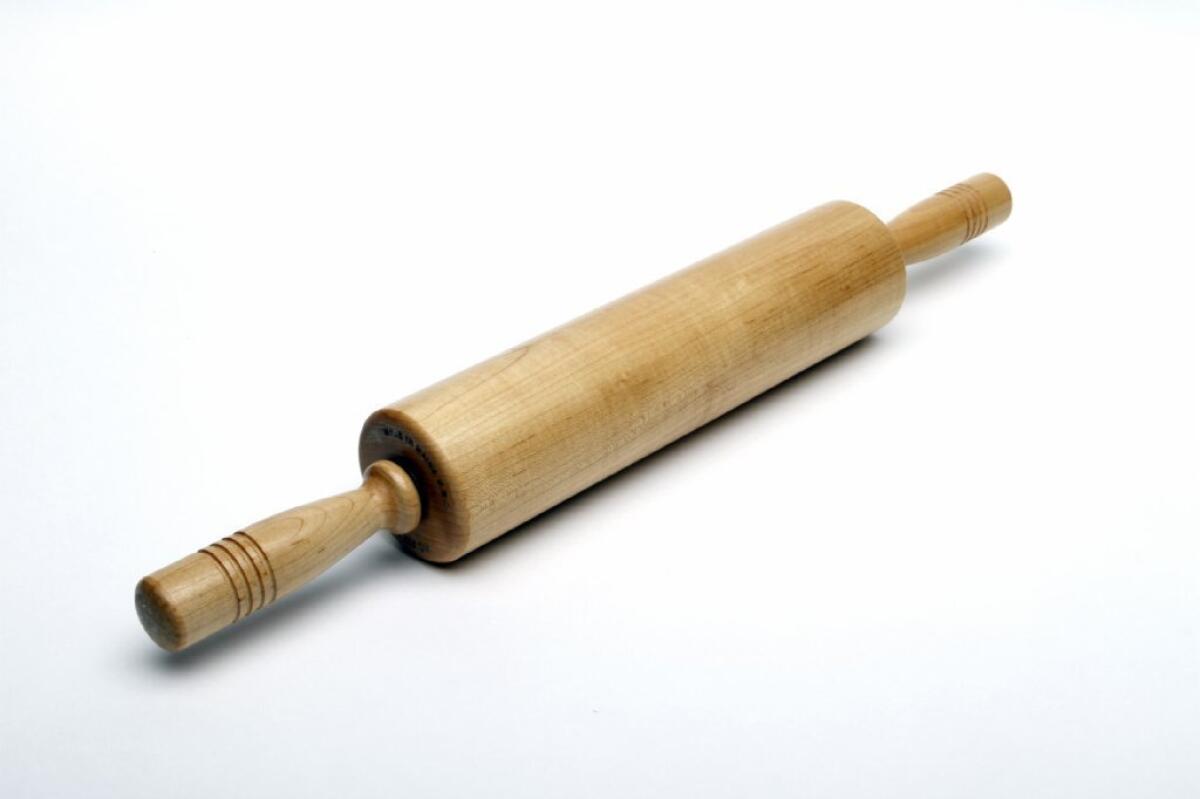Kitchen gadget: The rolling pin

- Share via
An essential tool in many bakeries and kitchens, rolling pins are used to evenly flatten everything from pie and pastry doughs to cookie and pasta doughs.
Simple as the tool may be -- some rolling pins are nothing more than a thick wooden dowel -- pins can come in a variety of shapes and sizes, made from any of a number of materials.
For many, the most familiar rolling pin is the classic hardwood rolling pin: a wooden barrel with a rod running through the center, often fitted with ball bearings and joined at the ends with handles, it’s often called an “American” or “baker’s” rolling pin. Although wood is the most classic material, barrels can be made from other materials depending on the cook’s or baker’s need: A marble rolling pin can be chilled before using, making it easier to roll out sensitive doughs such as laminated pastry (puff pastry, danish and croissant doughs); silicone barrels help to keep dough from sticking to the pin, minimizing (or eliminating) the amount of flour needed when rolling the dough. Still other barrels (usually made from glass or metal) are often hollow so they can be filled with cold water or ice; these pins are also used to keep the dough chilled as it’s rolled.
Many rolling pins are made from a single piece of wood or other material. A dowel (sometimes called a “straight” rolling pin) is typically made from a single piece of wood or metal; many bakers prefer this type of rolling pin because, they say, they can better “feel” the dough in their hands as they handle the pin. Some dowels are tapered at the end (sometimes called a “tapered” or “French” rolling pin); these are more easily rotated as they’re rolled, making them great for rolling out pie and pastry circles. Very small tapered pins, no more than several inches in length, are used to roll out Chinese dumplings and bao.
Textured pins (pins with designs or artwork) are used for marking specialized doughs, such as cookies (like the springerle mold at the top of the photo), breads and ravioli.
If you’ve never owned a pin, or are thinking about getting a good all-purpose one, consider a good, classic hardwood pin fitted with a rod and handles; baker’s rolling pins are often easier to use than a dowel or French pin, which can be tricky for a beginner to figure out. Make sure the pin is fitted with ball bearings to make for smooth strokes. In addition, consider getting a longer pin, with a barrel at least 12 inches in length; longer barrels cover more territory with each stroke, minimizing how much you need to work the dough. Finally, think about getting a heavier pin (but not marble, which can be overly heavy and hard to use if you’re not accustomed to the weight). Heavier pins take much of the work out of rolling out a dough; likewise, the thicker the barrel, the fewer strokes you’ll need to roll out the dough.
To clean a rolling pin, wipe it with a clean cloth. Don’t soak a rolling pin or run it under water; the water can hurt the wood and gum up the rod and bearings. If dough is stuck to the pin, flour the pin lightly, then brush the flour and dough off the pin with a towel. Use a soft brush to clean a textured pin.
Finally, store the pin in a safe, quiet place, where the pin won’t bump into other tools (nicks or scratches on the barrel can hurt the pin, preventing it from rolling a smooth dough).
Love cooking as much as I do? Follow me @noellecarter
More to Read
Eat your way across L.A.
Get our weekly Tasting Notes newsletter for reviews, news and more.
You may occasionally receive promotional content from the Los Angeles Times.











